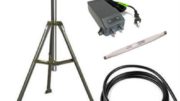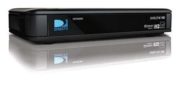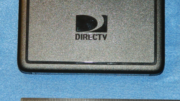When you hang around other tech blogs, you might hear the term “4:2:2.” Unlike similar terms, it doesn’t have a drug connotation or anything. It’s a way to describe the kind of signal that’s being sent to your television. Let’s look at what 4:2:2 means and why, even though it seems like a bad thing, it’s really ok.
Disclaimer: Color science is a very, very complicated thing. I’ve deliberately simplified parts of this article so that it’s a little shorter and easier to read. I promise it doesn’t change the overall conclusion, but if you want to go into more detail in the comments feel free.
Let’s break it down
Let’s look again at that sunset. Most of us think that TV signals are made of Red, Green, and Blue parts. It’s what we’ve always been told and if you look at your TV closely you’ll see the different colors. You can add red, green and blue light and come up with the full color picture. If you take away one of the colors, you can see an obvious shift in the picture.

What you see above is a simulation where we took away parts of the image in just the red, green, or blue channels to show you how much detail there is in all three channels. Even though the colors shift around pretty radically, you can still make out all the details.
Now, in computer monitors and some high-end video systems, the signal actually does get split out to red, green and blue. This is how you can keep absolutely the best fidelity, but it takes a lot of data to do that and especially with a digital HD signal, that would take a lot of processing power.
Looking at it another way
Now, RGB is only one way of looking at color. There are actually dozens of other models that can be used. Almost 100 years ago, scientists discovered that we get almost all the detail information from our eyes’ rods, those parts that sense only black and white. The cones which sense color don’t show nearly as much detail. So, a different way of showing photos was created called YCC. YCC still splits up the image into three parts, called Brightness, Chroma 1, and Chroma 2. But, all the detail shows up in the brightness part.
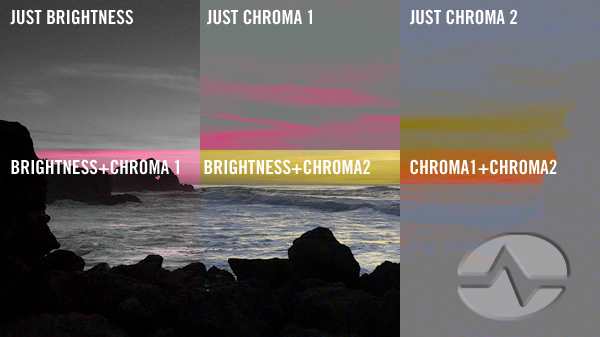
I’ve done the same thing to this photo as we did to the RGB one but instead, we’re showing you the brightness, plus the Chroma channel that shows how red or green the photo is, plus the other Chroma channel that shows how blue or yellow the photo is.
The big takeaway here is that the chroma channels don’t have a lot of detail in them. If you look at just the chroma channel you won’t be able to tell what anything is.
Aha!
Aha! said the guys who wanted to make the video signal smaller. If the C1 and C2 signals aren’t that detailed in the first place, what if we take even MORE detail out of them? Will anyone know?

The answer is no. Here’s an image that shows just that chroma 2 channel. The left size is full resolution. On the right, 3/4 of the image information has been taken out. THREE FOURTHS! If you make a 2×2 grid out of any part of that picture, 4 dots are used to show the image at left. Only one dot is used to show the image at right.
Yeah, it kind of blew my mind too, when I first learned about it. Don’t worry, you’ll recover.
The real proof is when we take that cut-down information and combine it with the brightness information at full quality. Take a look at this:
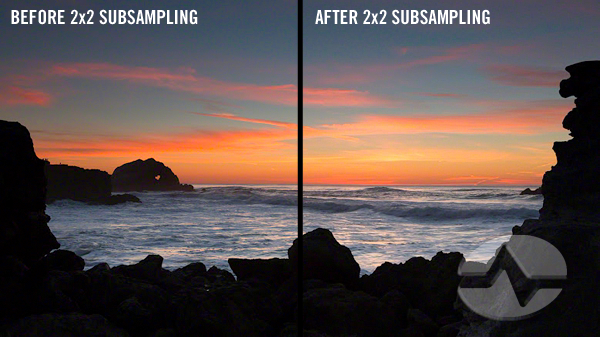
Can you see any difference between the quality of the left half and the quality of the right half? We can’t. Yet, even before fancy compression is applied, the “cut-down” version would take less than half the space as the “full” version. So, you are not losing anything that you might really miss.
It’s called 4:2:2
They call it “4:2:2” because of the relative sizes of the grids being used for the three channels. The 4 means that a 2×2 grid is being used, while the 2 means a 1×1 grid is being used. A full-quality image would be referred to as 4:4:4.
So, the next time someone tells you that you need a fancy streaming player or something else that outputs 4:4:4 signals, remember this article… and ask yourself if you’ll really see the difference.


